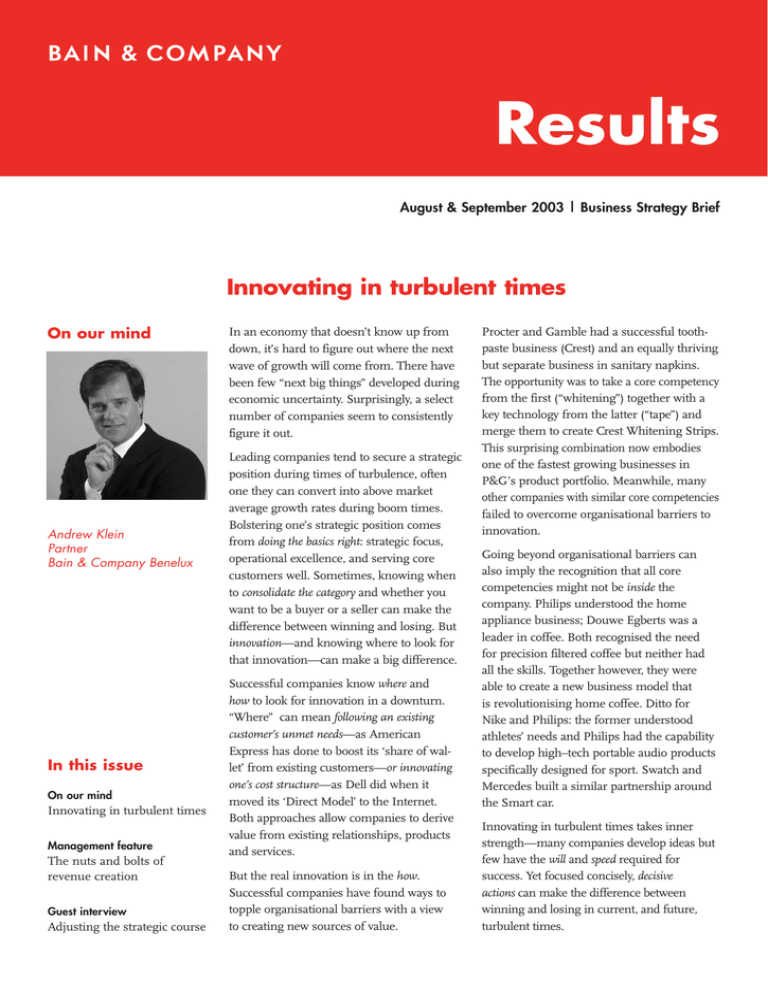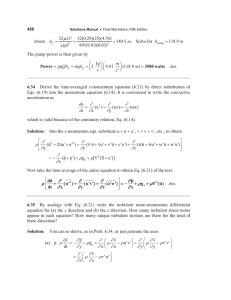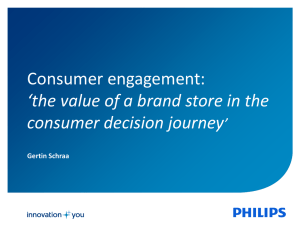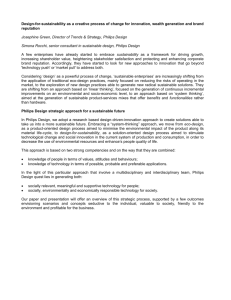Results Innovating in turbulent times
advertisement

Results August & September 2003 | Business Strategy Brief Innovating in turbulent times On our mind Andrew Klein Partner Bain & Company Benelux In this issue On our mind Innovating in turbulent times Management feature The nuts and bolts of revenue creation Guest interview Adjusting the strategic course In an economy that doesn’t know up from down, it’s hard to figure out where the next wave of growth will come from. There have been few “next big things” developed during economic uncertainty. Surprisingly, a select number of companies seem to consistently figure it out. Leading companies tend to secure a strategic position during times of turbulence, often one they can convert into above market average growth rates during boom times. Bolstering one’s strategic position comes from doing the basics right: strategic focus, operational excellence, and serving core customers well. Sometimes, knowing when to consolidate the category and whether you want to be a buyer or a seller can make the difference between winning and losing. But innovation—and knowing where to look for that innovation—can make a big difference. Successful companies know where and how to look for innovation in a downturn. “Where” can mean following an existing customer’s unmet needs—as American Express has done to boost its ‘share of wallet’ from existing customers—or innovating one’s cost structure—as Dell did when it moved its ‘Direct Model’ to the Internet. Both approaches allow companies to derive value from existing relationships, products and services. But the real innovation is in the how. Successful companies have found ways to topple organisational barriers with a view to creating new sources of value. Procter and Gamble had a successful toothpaste business (Crest) and an equally thriving but separate business in sanitary napkins. The opportunity was to take a core competency from the first (“whitening”) together with a key technology from the latter (“tape”) and merge them to create Crest Whitening Strips. This surprising combination now embodies one of the fastest growing businesses in P&G’s product portfolio. Meanwhile, many other companies with similar core competencies failed to overcome organisational barriers to innovation. Going beyond organisational barriers can also imply the recognition that all core competencies might not be inside the company. Philips understood the home appliance business; Douwe Egberts was a leader in coffee. Both recognised the need for precision filtered coffee but neither had all the skills. Together however, they were able to create a new business model that is revolutionising home coffee. Ditto for Nike and Philips: the former understood athletes’ needs and Philips had the capability to develop high–tech portable audio products specifically designed for sport. Swatch and Mercedes built a similar partnership around the Smart car. Innovating in turbulent times takes inner strength—many companies develop ideas but few have the will and speed required for success. Yet focused concisely, decisive actions can make the difference between winning and losing in current, and future, turbulent times.




